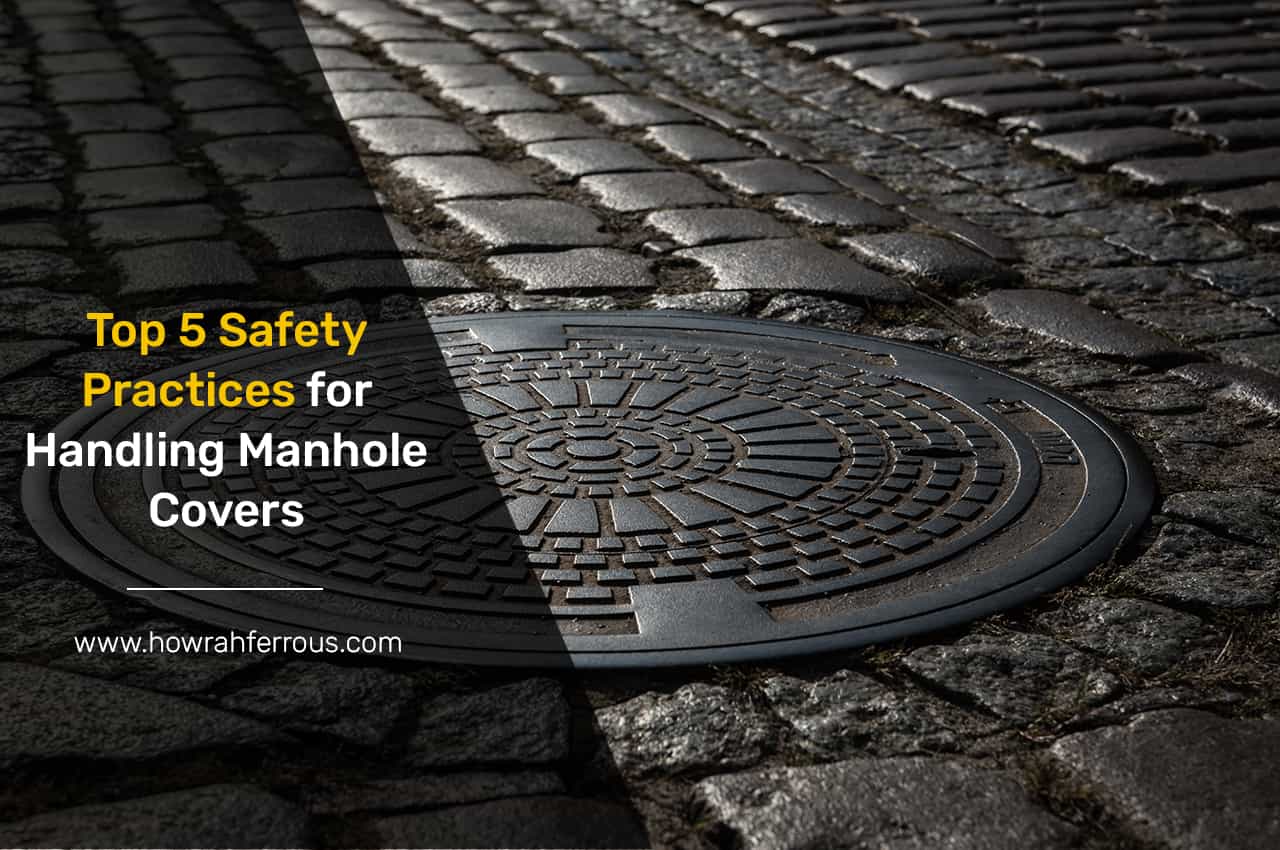Manhole Covers: Resistance to Corrosion and Environmental Degradation

Manhole covers play a vital role in urban infrastructure by providing access to critical underground utilities. These covers must endure harsh conditions, including heavy loads and environmental challenges such as corrosion. This article focuses specifically on how cast iron and ductile iron manhole covers resist corrosion and environmental degradation.
Materials Used in Manhole Covers
Cast Iron and Ductile Iron
Cast Iron: Traditionally, manhole covers are made from cast iron due to its high compressive strength and durability. Cast iron, however, is susceptible to corrosion when exposed to moisture and oxygen over time, which can lead to rusting. To mitigate this issue, cast iron manhole covers are often treated with coatings or other protective methods to prevent oxidation and extend their lifespan.
Ductile Iron: An enhanced version of cast iron, ductile iron is made by adding small amounts of alloying elements like nickel and copper to improve its strength and flexibility. The inclusion of nodular graphite gives ductile iron superior impact resistance and greater ductility compared to cast iron, making it less likely to crack under stress. Ductile iron also resists corrosion more effectively due to its improved structural properties.
Protective Coatings and Treatments for Iron Covers
Both cast and ductile iron manhole covers benefit from various protective treatments to improve their resistance to corrosion:
Galvanisation: A common treatment for cast and ductile iron is galvanisation, where a layer of zinc is applied to the surface. This zinc layer acts as a sacrificial anode, corroding in place of the iron and preventing rust from forming on the metal. Galvanised iron covers are especially effective in environments where corrosion risks are high.
Epoxy Coatings: Epoxy coatings form a strong, durable barrier against moisture and chemicals. When applied to cast or ductile iron, these coatings provide extra protection from rust and corrosion, especially in areas where exposure to harsh chemicals or water is frequent.
Bituminous Coatings: For additional protection, bituminous coatings are often used, particularly on cast iron covers. These coatings not only provide waterproofing but also reduce the chances of physical wear and tear, helping to keep the cover in good condition.
Design Considerations for Corrosion Resistance in Iron Covers
In addition to the choice of materials and coatings, the design of manhole covers plays an essential role in minimising corrosion:
Load-Bearing Design: Both cast and ductile iron manhole covers must be able to withstand heavy loads, including those from vehicles. By incorporating reinforced ribs and specialised cross-sections, these covers can distribute weight more evenly and reduce the risk of cracking or bending, which might expose the metal to further corrosion.
Ventilation and Drainage: Proper ventilation under the cover allows air to circulate, reducing moisture buildup that can accelerate rusting. Drainage holes are also crucial for allowing water to escape, preventing pooling that might cause corrosion over time.
Snug Fitting: Ensuring a proper fit between the cover and the frame is essential to prevent water or debris from seeping through. A well-secured cover reduces the risk of corrosion that may result from trapped moisture.
Environmental Considerations for Iron Manhole Covers
Iron manhole covers face various environmental challenges that can influence their longevity:
Urban and Industrial Environments: In urban settings, where manhole covers are exposed to regular traffic and weather conditions, cast and ductile iron covers provide robust protection. In industrial environments, where exposure to chemicals or high temperatures is common, ductile iron is often the material of choice due to its superior strength and corrosion resistance.
Coastal Areas: Coastal regions present a particular challenge due to the high salt content in the air, which can accelerate the corrosion of iron. For such environments, corrosion-resistant coatings like galvanisation are critical in extending the lifespan of cast and ductile iron manhole covers.
Climate Variability: Extreme temperatures, both hot and cold, can cause iron to expand and contract, which can stress the material and cause cracks. Ductile iron is better equipped to handle these temperature fluctuations, as its increased flexibility reduces the likelihood of cracking under thermal stress.
Maintenance and Longevity of Iron Manhole Covers
To ensure the long-term durability of cast and ductile iron manhole covers, regular maintenance is essential:
Inspection and Cleaning: Routine inspections can help identify early signs of corrosion or wear. Keeping the manhole covers clean by removing debris that could trap moisture against the metal helps prevent rust formation.
Recoating and Repairs: Reapplying protective coatings or repairing any surface damage as soon as it is noticed can prevent corrosion from worsening. Small cracks or chips in the coating should be addressed promptly to preserve the integrity of the manhole cover.
Replacement Policies: Over time, even well-maintained cast and ductile iron manhole covers will eventually require replacement. Establishing a scheduled replacement cycle based on the expected lifespan of the covers can prevent unexpected failures and maintain the safety of the underground utility systems.
Conclusion
Cast iron and ductile iron are among the most commonly used materials for manhole covers, owing to their strength, durability, and resistance to corrosion. While cast iron is more prone to rusting, ductile iron offers improved resistance and flexibility, making it a preferred choice in many situations.
Protective coatings, design considerations, and regular maintenance practices all contribute to the longevity of iron manhole covers, ensuring they continue to provide safe, reliable access to underground utilities for years to come. As materials science evolves, the continued development of corrosion-resistant treatments and coatings will enhance the performance of iron manhole covers in diverse environments.



